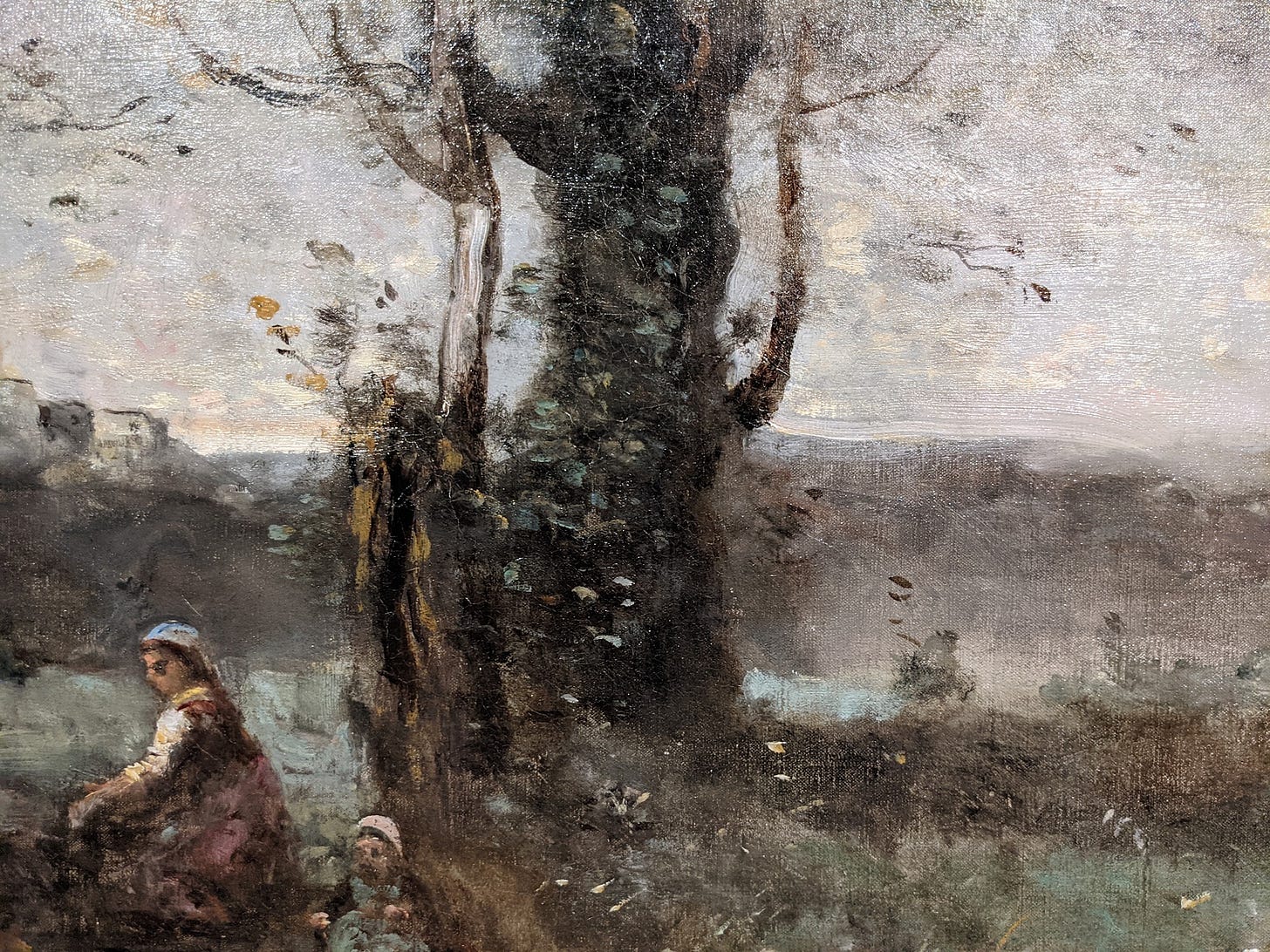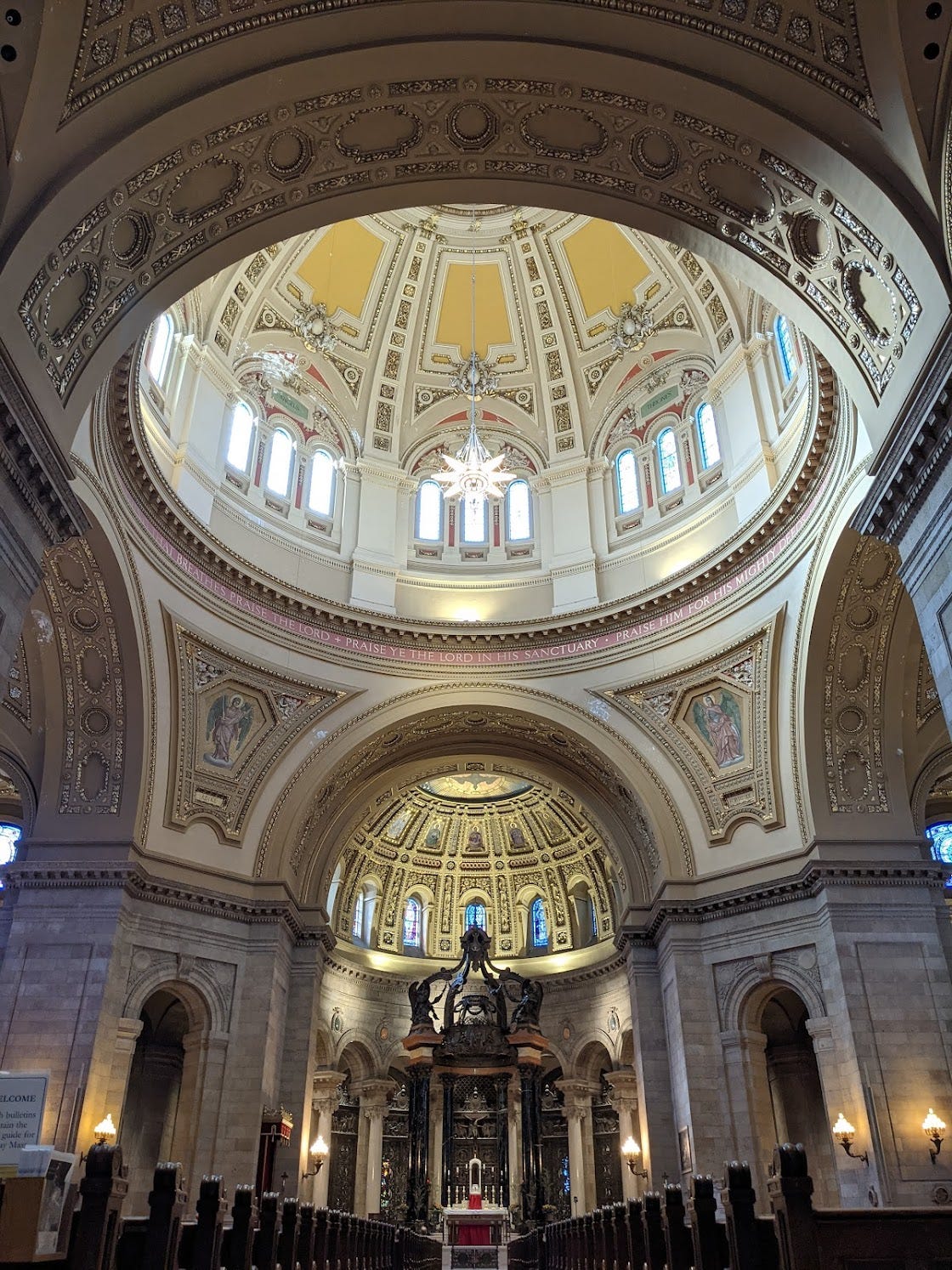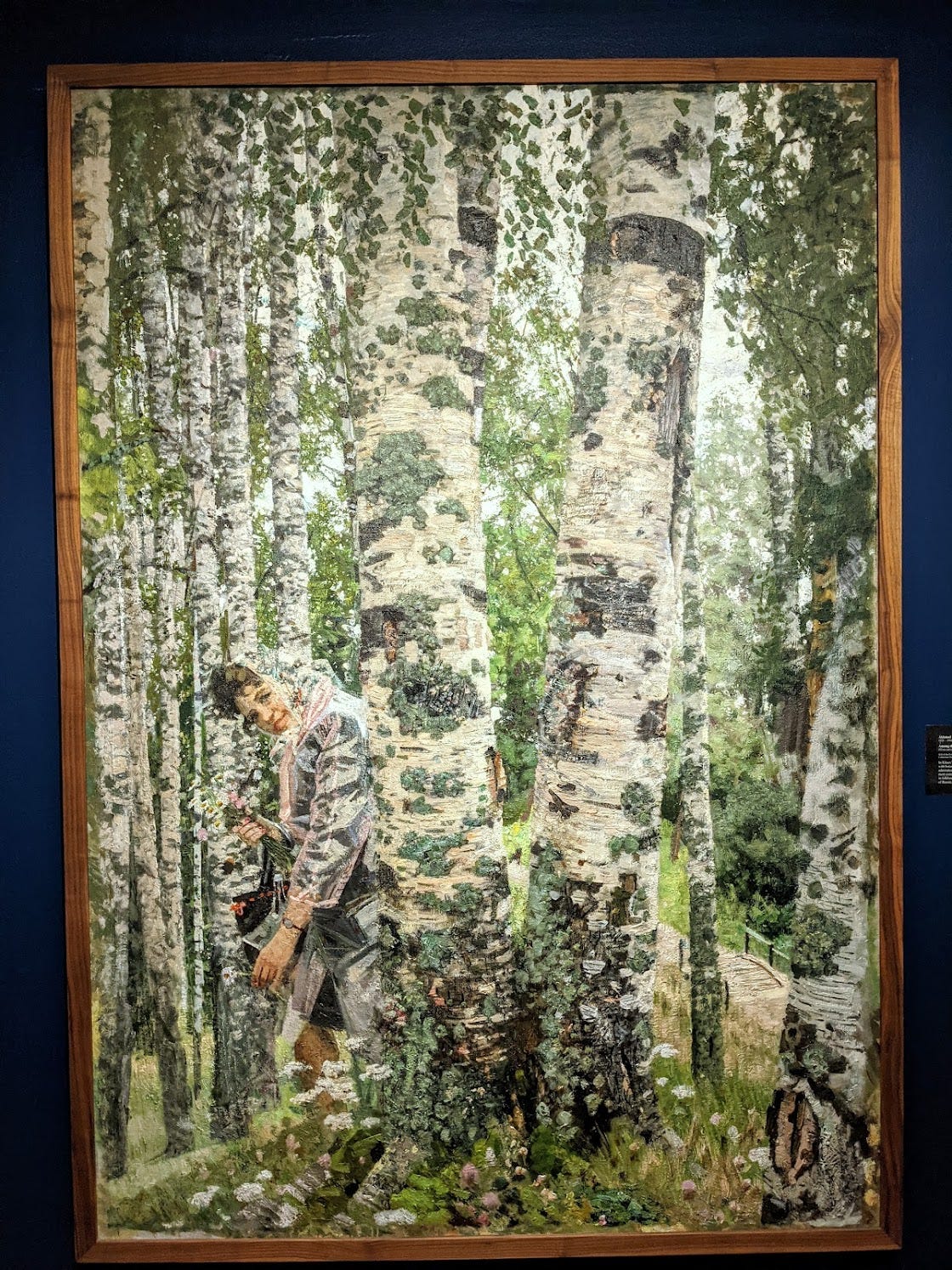Oh Yah, You Betcha Edition
In which your faithful ornamental hermit delivers his wide-eyed dispatches from the open road.
Gm.
This month, As Ever has joined up with a travelling caravan slowly meandering its way through ancestral lands (i.e. visiting my parents). So this roundup is a bit shorter, a bit sweeter, and a bit more visual.
If you’re new, catch up on what this substack is about here. I also post occasional poetry and prose. It’s free. Subscribe here if you like.
Otherwise, welcome friend, and scroll on.
Dumb and dumber. The internet may be a brutal Girardian panopticon but it also makes available to us writers like the poet Dope Joan over at Lapsed Heretic. Read her on how God works through, not against, our Dumbness: “God didn’t make humans essentially smart. He made us essentially loved.”
And then on beauty as restoration of an original union:
God is an aesthete. He made each of us with an image of astonishing beauty in mind, and the fact that we have this life to aspire toward and grow to more closely resemble that brilliant vision is a sign of His deep and abiding affection for us. What I received today was the experience of God’s gaze, which sees each of us according to our original beauty even as in the reality of our lives we sin and are mired in sorrow. We have made ourselves ugly and ashamed; God lovingly directs us back to Him, back to who we are, back to a life of grace and mercy in which we can be fully visible, illuminated from every side, and joyful to live in His plain sight.
Watering the seed of eternity. Rabbi Heschel on the Sabbath:
He who wants to enter the holiness of the day must first lay down the profanity of clattering commerce, of being yoked to toil. He must go away from the screech of dissonant days, from the nervousness and fury of acquisitiveness and the betrayal in embezzling his own life. He must say farewell to manual work and learn to understand that the world has already been created and will survive without the help of man. Six days a week we wrestle with the world, wringing profit from the earth; on the Sabbath we especially care for the seed of eternity planted in the soul.
Iconic Andy. The Brooklyn Museum is hosting a new exhibit on Andy Warhol’s Catholic faith. His repetitive, abstracted, and hieratic pop-culture images echoed, quite consciously, the iconography of his childhood at Pittsburgh’s St. John Chrysostom Byzantine Catholic church:
He often went to four lengthy services over a weekend, and spent a lot of time staring at religious icons. They were a progenitor of his hundreds of images of Marilyn Monroe, dozens of Jackie O, the icons of American culture and celebrity.

Death and forgiveness. Joe Keegin on his investigation into the philosophical justification for forgiveness in the wake of seeking reconciliation with a difficult father.
Runaway trolleys and imaginary axe murderers always struck me as ridiculous: if moral philosophy didn’t help make sense of life as one lives it—if it functioned only for deriving supposed laws from hypothetical edge cases—it was of no use to me.
Books.
In my father’s house, there are many books. An embarrassment of riches which, even in my voracious, lonesome childhood, I never fully plumbed. One that took me by surprise on this trip was Markings, the spiritual journal of Dag Hammarskjöld, the Swedish economist who served as the first Secretary-General of the United Nations. It was not published until after Hammarskjöld’s untimely 1961 death in an airplane crash in Central Africa, a crash which has never been definitively explained but which may have involved one or more parties to the conflict in the Congo that he was there to resolve.
I knew about that; what I did not know was that Hammarskjöld was a man of deeply felt and often anguished religious mysticism, expressed in a poetical register I confess I don’t generally associate with severe Nordic protestantism. (Though he cites among his greatest influences the Medieval mystics Meister Eckhart and John van Ruysbroeck.) In his writings he grapples especially with the creative tension between the spiritual life and the life of action in the world.
We are not permitted to choose the frame of our destiny. But what we put into it is ours. He who wills adventure will experience it—according to the measure of his courage. He who wills sacrifice will be sacrificed—according to the measure of his purity of heart.
The literary bureaucrat has a long pedigree, from the Tang Dynasty to Octavio Paz. But from my experience, it is a dying breed. W.H. Auden (writing the foreword) concludes with the “conviction...that one has had the privilege of being in contact with a great, good, and lovable man.”
Beyond obedience, its attention fixed on the goal—freedom from fear.
Beyond fear—openness to life.
And beyond that—love.
Art & architecture.
I’ve been visiting lots of wonderful churches and museums. Here are some things I liked.
Henri de Toulouse-Latrec, Boy With Dog, 1890.
Detail of Jean-Baptiste-Camille Corot, Brume Matinale Au Marais. Baudelaire’s verdict: “[Corot] does astonish…but slowly.”
Basilica of St. Stanislaus Kostka, Winona, MN, completed 1895. The Polish Catholic emigrants to the United States went absolutely bonkers (architecturally speaking) so consistently there is a whole “Polish Cathedral style” named after it, even though most of the churches aren’t even cathedrals1.
Cathedral of Saint Paul, Saint Paul, MN. Completed in 1915, this imposing edifice is laid out in a Greek Cross design (four arms of equal lengths topped by a dome, rather than a single long dominant central aisle as in many Western churches). Unlike the Gothic, which, with its towering columns and branching arches gives the impression of a forest-like vertical enclosure, this approach creates the sensation instead of vertiginous open space, like the feeling of being dwarfed by the impossibly large night sky.
Detail from Anatoli Nasedkin’s Land, 1982. From the Museum of Russian Art, Minneapolis, MN. A small but wonderful collection of Soviet-era painting, and perhaps my most intense museum-going experience to date, if only because I had the whole place to myself for hours.
Poetry.
Socialist Realism
(Viewing Kitaev’s “Among the Birch Trees”)
The woman—innocent yet sly,
Half-hidden but inviting. Beckoning within.
Canthaled eyes, wounded, but, one can sense,
Finally satisfied.
Emerging from conjoined trunk of birch:
From the smudged and thinning shade of winter,
A snapshot of brief-blossoming femininity,
Judged good, celebrated, protected—
Half-understood, even—
By the solemnity of time.
And was it propaganda? And if so?
And for what? This is no new man.
Though she may carry the purse and hood
Designed by men with minds of machine.
But that, too, is our old burden, here.
Everywhere. It is us. Our faith must be that
The wild vision lives past the machine
That seeds it.
Propaganda for the trees, yes.
Slow subversives of broad daylight.
What I’ve been working on.
A poem on memory & Montreal.
A portrait of Christopher.
Charcoal and pastel figure work.
More here.
The liturgical life.
There are no real personalities apart from God. Until you have given up your self to Him you will not have a real self. Sameness is to be found most among the most ‘natural’ men, not among those who surrender to Christ. How monotonously alike all the great tyrants and conquerers have been; how gloriously different are the saints.
—C.S. Lewis, Mere Christianity
A #blessed Feast of All Saints and All Souls to all, and a fruitful November.
As ever,
J
A cathedral is not just a “big cool church,” but specifically the seat of the bishop of a given area. Cathedra=Latin for seat/chair/throne.















Interesting to think of Andy Warhol as a man of faith. It makes me wonder how many other seemingly entirely secular-minded artists simply didn't want their faith to be in the public spotlight.